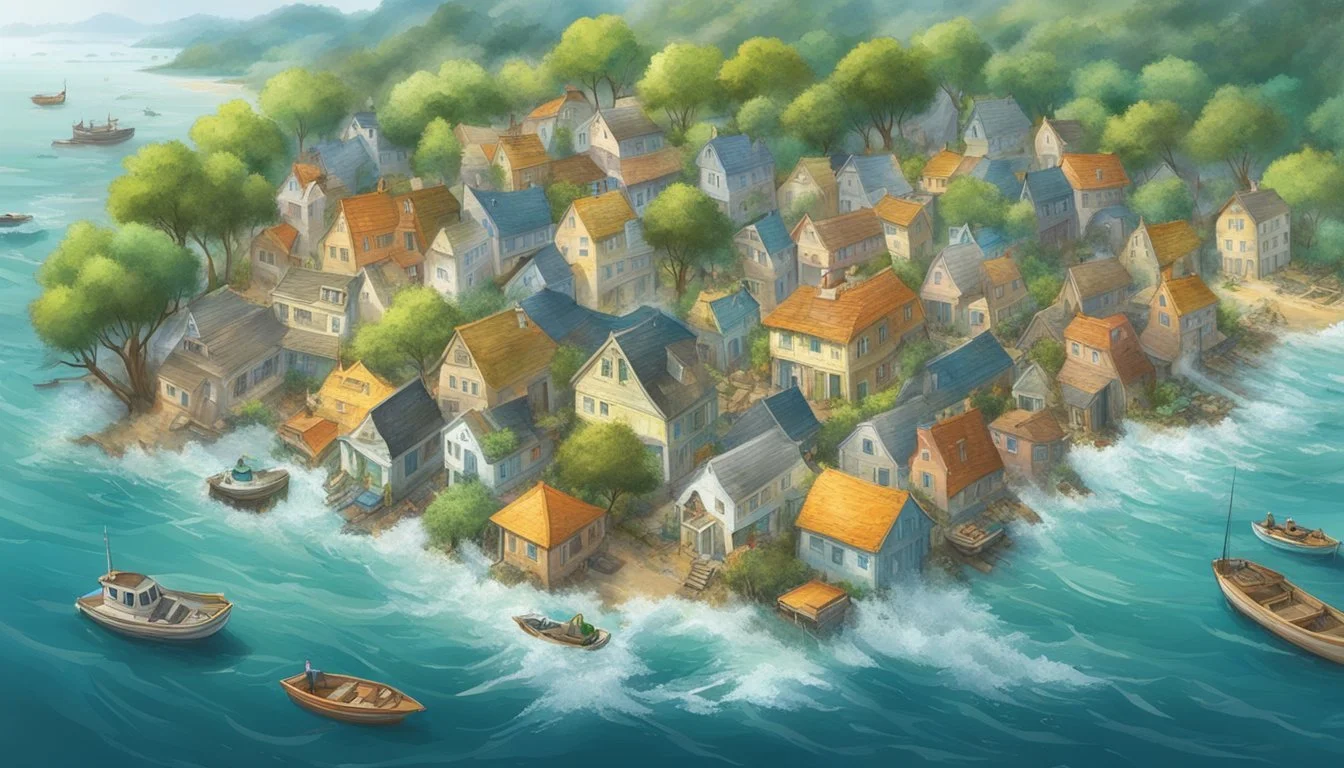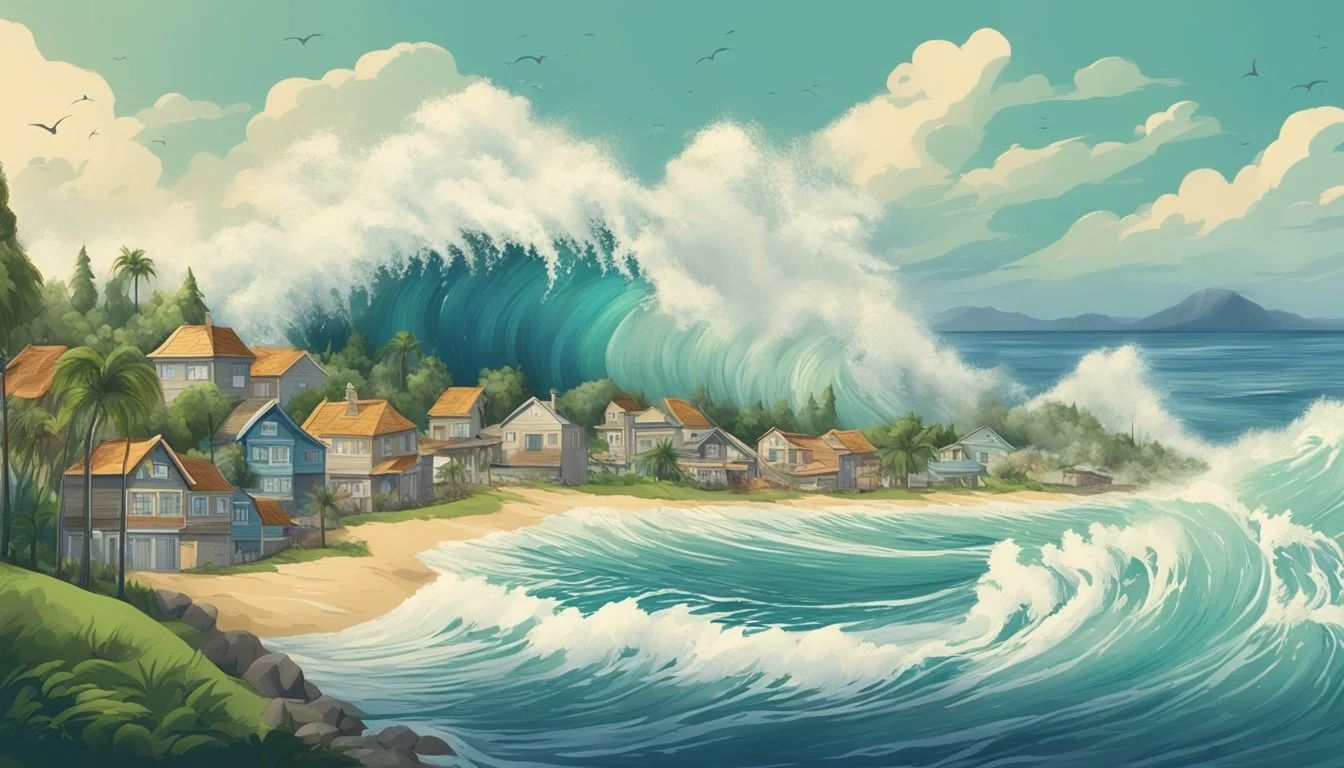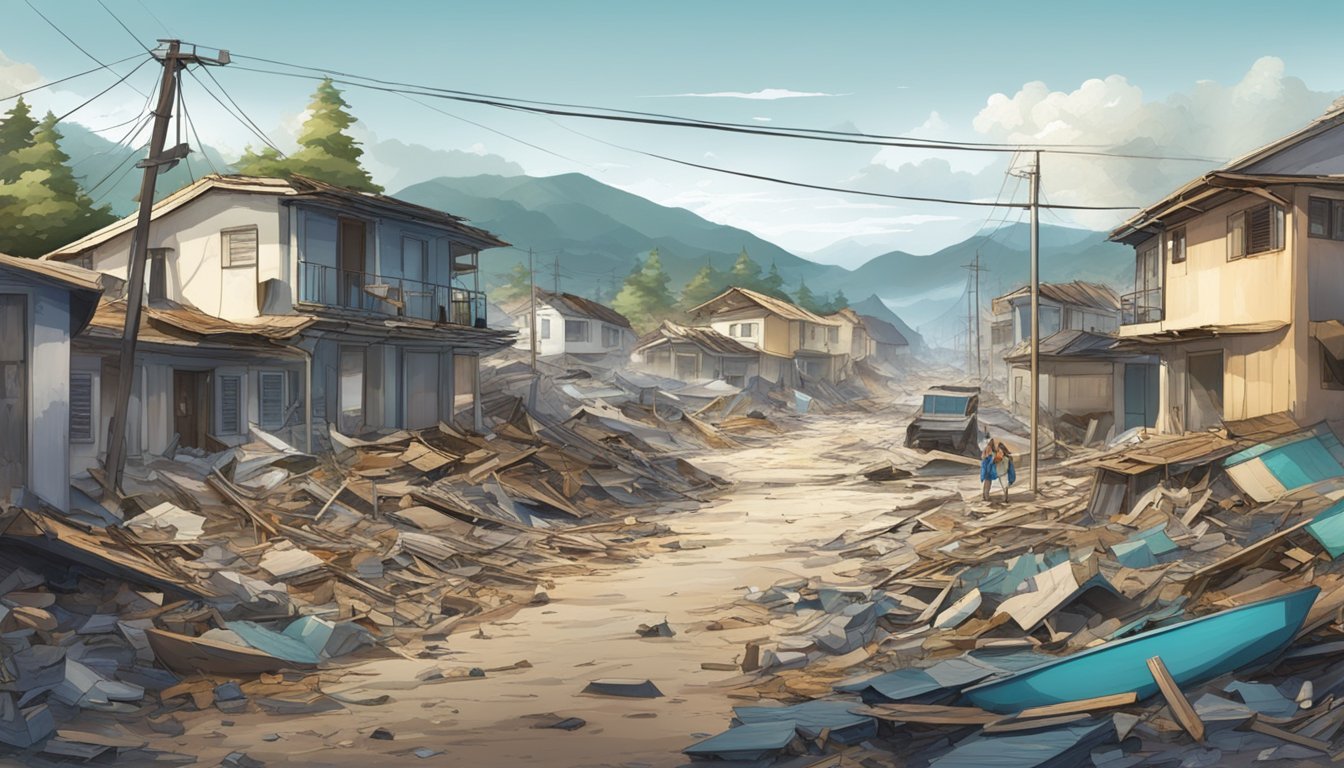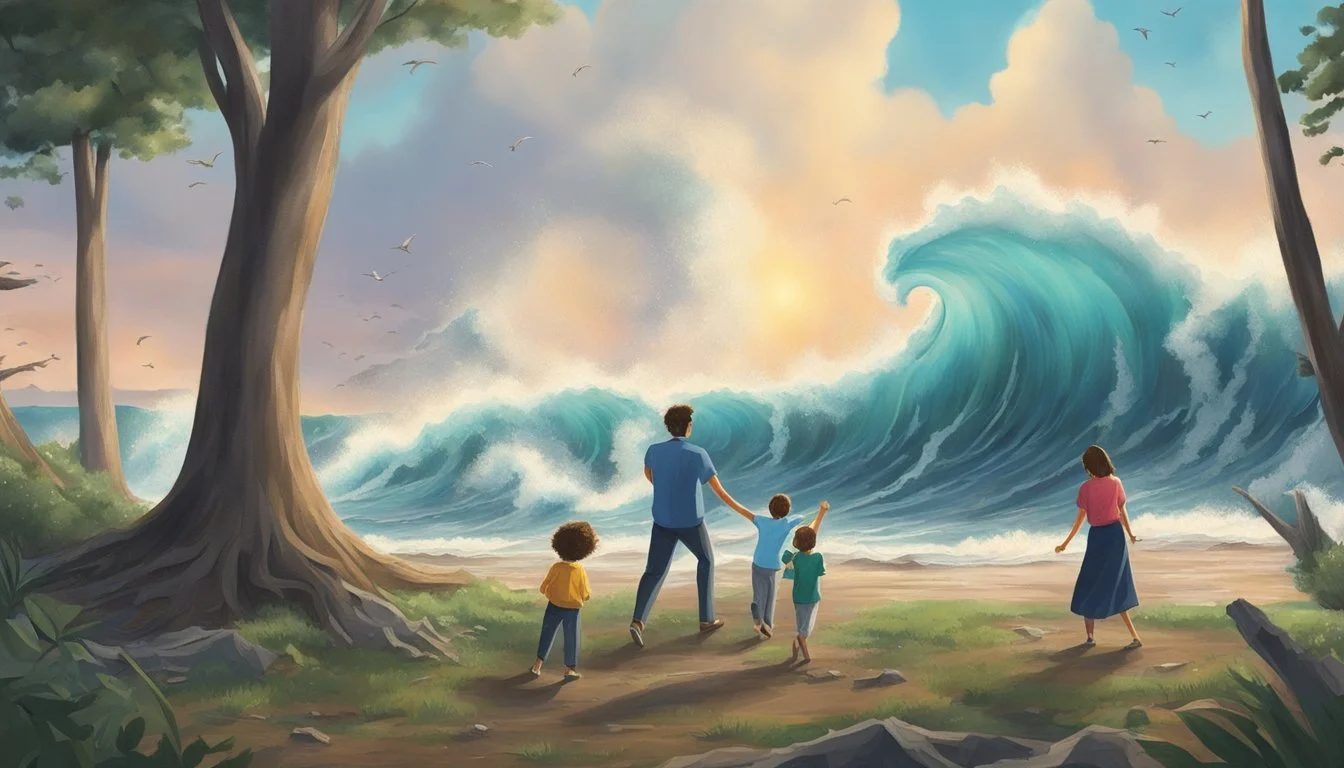Surviving the Tsunami
The Incredible True Story That Inspired "The Impossible"
In 2004, a catastrophic tsunami struck the Indian Ocean, leaving devastation in its wake. Among the survivors was the Belón-Álvarez family, whose incredible story of resilience inspired the 2012 film "The Impossible." This Spanish family of five faced unimaginable challenges as they fought to stay alive and reunite amidst the chaos.
The Belón-Álvarez family's harrowing experience began on December 26, 2004, when massive waves engulfed their vacation resort in Thailand. Separated by the force of the water, María Belón, Enrique Álvarez, and their three children embarked on a desperate struggle for survival. Their ordeal involved battling injuries, navigating destroyed landscapes, and maintaining hope against overwhelming odds.
The film adaptation, directed by J.A. Bayona, brought their story to a global audience. Starring Naomi Watts, Ewan McGregor, and a young Tom Holland in his feature film debut, "The Impossible" vividly portrayed the family's fight for survival and eventual reunion. The movie's success at the box office and critical acclaim, including an Academy Award nomination, further amplified the reach of this remarkable true story.
The Background of 'The Impossible'
'The Impossible' is a 2012 film directed by J.A. Bayona that portrays the harrowing experiences of a family during the 2004 Indian Ocean tsunami. The movie is based on the true story of María Belón, her husband Enrique Álvarez, and their three children.
The family was vacationing in Thailand when the devastating tsunami struck on December 26, 2004. This natural disaster was triggered by a massive undersea earthquake off the coast of Sumatra, Indonesia.
The film stars Naomi Watts as María, Ewan McGregor as Enrique, and a young Tom Holland in his feature film debut as their eldest son Lucas. It received critical acclaim for its realistic depiction of the tsunami's impact and the family's struggle for survival.
'The Impossible' focuses on the personal experiences of the Belón-Álvarez family amidst the larger tragedy. The tsunami affected multiple countries and claimed over 230,000 lives, making it one of the deadliest natural disasters in recorded history.
The movie's production involved extensive research and consultation with survivors to ensure an accurate portrayal of events. Special effects were used to recreate the tsunami's destructive force, while the actors underwent physical and emotional preparation for their roles.
Overview of the 2004 Indian Ocean Tsunami
The 2004 Indian Ocean tsunami was one of the deadliest natural disasters in recorded history. It devastated coastal areas across South and Southeast Asia, causing massive loss of life and widespread destruction.
Causes and Origins
A massive undersea earthquake triggered the tsunami on December 26, 2004. The 9.1-9.3 magnitude quake occurred off the coast of Sumatra, Indonesia, along the Sunda megathrust fault line. It was the third-largest earthquake ever recorded.
The quake ruptured a 1,600 km (1,000 mile) section of fault, displacing the seafloor vertically by several meters. This sudden movement displaced enormous volumes of water, generating multiple tsunami waves.
Within minutes, the first waves struck nearby coastlines. The tsunami spread across the Indian Ocean at speeds up to 800 km/h (500 mph).
Impact and Magnitude
The tsunami's effects were catastrophic and far-reaching. Waves up to 30 meters (100 feet) high struck coastlines across 14 countries. Indonesia, Sri Lanka, India, and Thailand suffered the heaviest losses.
Over 230,000 people died, with Indonesia accounting for nearly three-quarters of the deaths. Millions more were displaced as coastal communities were obliterated.
The disaster caused an estimated $10 billion in damage. Entire towns were wiped out, with critical infrastructure destroyed. The tsunami's impact stretched from Southeast Asia to East Africa, making it a truly global catastrophe.
Recovery efforts faced immense challenges due to the scale of destruction. The event spurred major improvements in tsunami warning systems and disaster preparedness worldwide.
True Story Behind 'The Impossible'
'The Impossible' depicts the harrowing experiences of the Belón-Álvarez family during the 2004 Indian Ocean tsunami. Their story of survival and reunification amidst catastrophic circumstances captured global attention.
The Family's Experience
María Belón, her husband Enrique Álvarez, and their three sons were vacationing in Thailand when the tsunami struck on December 26, 2004. The family was staying at a resort in Khao Lak when massive waves hit the coastline.
The force of the water separated the family members. María and her eldest son Lucas were swept away together, while Enrique and the two younger boys were carried in different directions.
María suffered severe injuries, including a deep gash on her chest and a nearly severed leg. Despite her condition, she fought to keep Lucas safe as they struggled to find help.
The Events of Survival
In the chaotic aftermath, María and Lucas managed to reach a tree, where locals rescued them. They were taken to an overcrowded local hospital, where María received life-saving treatment.
Enrique, initially believing his wife and eldest son had perished, searched tirelessly for them while protecting his two younger sons. The family's incredible luck led to an emotional reunion at the hospital.
Against all odds, all five family members survived the disaster. Their story of resilience and the kindness of strangers who aided them became a symbol of hope amidst tragedy.
The Belón-Álvarez family's experience inspired the film 'The Impossible', bringing attention to the devastating impact of the 2004 tsunami and the human capacity for survival.
Cinematic Representation
"The Impossible" brings the harrowing true story of the Belón-Álvarez family to life on screen. The film balances dramatic intensity with factual accuracy to portray the devastating 2004 Indian Ocean tsunami and its aftermath.
Comparison with Reality
The movie closely mirrors the real events experienced by María Belón and her family. Key details, such as María being swept away with her eldest son and her husband searching for them with their two younger sons, align with the actual occurrences. The film accurately depicts the chaos and destruction caused by the tsunami, as well as the struggle for survival in its wake.
Some artistic liberties were taken to enhance the narrative. For example, the nationalities of the family were changed from Spanish to British. This alteration allowed for a more international cast, including Naomi Watts and Ewan McGregor, while maintaining the essence of the story.
Director's Approach
J.A. Bayona, the director of "The Impossible," aimed to create a visceral and emotionally authentic experience. He worked closely with María Belón to ensure the film captured the true essence of their ordeal. Bayona used practical effects and large-scale sets to recreate the tsunami's impact, providing a realistic backdrop for the actors' performances.
The director focused on the human element of the disaster, emphasizing the family's resilience and the kindness of strangers. This approach helped viewers connect with the characters and understand the profound impact of the event. Bayona's attention to detail extended to the portrayal of injuries and the chaotic atmosphere in the aftermath of the tsunami.
Reception and Critique
"The Impossible" garnered significant attention for its portrayal of the 2004 Indian Ocean tsunami. The film elicited strong emotional responses from audiences and sparked discussions among critics about its approach to the disaster.
Public Response
"The Impossible" resonated deeply with viewers worldwide. Many praised the film's realistic depiction of the tsunami's impact and the emotional journey of the featured family. Survivors of the actual event commended the movie for capturing the terror and chaos they experienced. The film's box office success, quadrupling its $45 million budget, reflected its strong public appeal.
Audiences connected with the powerful performances, particularly Naomi Watts' Oscar-nominated role. Tom Holland's debut performance also received acclaim, foreshadowing his future stardom. The movie's intense tsunami sequence left a lasting impression on viewers, with many describing it as viscerally affecting and unforgettable.
Critical Analysis
Critics generally praised "The Impossible" for its technical achievements and emotional impact. The tsunami effects were widely lauded for their realism and terrifying power. Director J.A. Bayona received recognition for his skillful handling of the disaster scenes and intimate family moments.
Some reviewers, however, raised concerns about the film's focus on a Western family in a predominantly Asian tragedy. Critics questioned whether this perspective overshadowed the experiences of local victims and survivors. The movie's emotional intensity also sparked debate, with some praising its raw power while others found it occasionally veering into melodrama.
Despite these critiques, most reviewers acknowledged the film's effectiveness in conveying the human toll of the disaster. The performances, particularly those of Watts and McGregor, were consistently highlighted as standout elements of the production.
Impact on Tsunami Awareness
The release of "The Impossible" heightened global awareness of tsunami dangers and preparedness. It sparked discussions on disaster readiness and the importance of early warning systems.
Educational Influence
"The Impossible" served as a powerful educational tool, illustrating the devastating force of tsunamis. Schools incorporated the film into curricula to teach about natural disasters and their impacts. Many coastal communities used scenes from the movie to demonstrate proper evacuation procedures.
The film's vivid depiction of the 2004 Indian Ocean tsunami prompted increased interest in oceanography and seismology among students. This led to a rise in enrollment for related courses at universities.
Survivors' Advocacy
Survivors portrayed in "The Impossible" became vocal advocates for tsunami awareness and preparedness. María Belón, whose family's story inspired the film, participated in numerous public speaking engagements. She shared her experiences and stressed the importance of disaster readiness.
The Belón-Álvarez family contributed to fundraising efforts for tsunami relief and recovery initiatives. Their involvement helped maintain public interest in supporting affected regions long after the initial disaster.
Many survivors used the film's popularity as a platform to push for improved early warning systems in coastal areas worldwide. This advocacy led to increased funding for tsunami detection technology and emergency response training in vulnerable regions.
Related Research and Findings
The 2004 Indian Ocean tsunami sparked extensive scientific research and technological advancements. Studies examined the long-term impacts on survivors and affected regions, while improvements in early warning systems aimed to mitigate future disasters.
Post-Tsunami Studies
Researchers conducted numerous studies on the psychological and social effects of the 2004 tsunami. A long-term follow-up of survivors in Thailand revealed persistent mental health issues, including post-traumatic stress disorder and depression, years after the event.
Another study focused on the rebuilding efforts in Aceh, Indonesia, highlighting the challenges of balancing rapid reconstruction with sustainable development. The research emphasized the importance of community involvement in recovery processes.
Ecological studies assessed the impact on coastal ecosystems. Findings showed significant damage to coral reefs and mangrove forests, but also demonstrated nature's resilience in some areas.
Advancements in Tsunami Warning Systems
The catastrophic event led to substantial improvements in tsunami detection and warning systems. The Indian Ocean Tsunami Warning System, established in 2005, now includes a network of seismographic stations, sea-level gauges, and deep-ocean sensors.
Scientists developed more sophisticated computer models to predict tsunami wave propagation and coastal impacts. These models incorporate high-resolution bathymetry data and complex wave dynamics.
Public education initiatives became a crucial component of preparedness efforts. Many coastal communities now conduct regular evacuation drills and have implemented clearly marked tsunami evacuation routes.
Satellite technology advancements enhanced the ability to detect and monitor tsunamis. Researchers explored the use of GPS-equipped buoys and satellite altimetry for more accurate real-time tsunami measurements.
Personal Accounts
Survivors of the 2004 Indian Ocean tsunami shared powerful testimonies of their experiences. Their stories reveal both the devastating impact of the disaster and the strength of the human spirit in overcoming unimaginable challenges.
First-Hand Experiences
María Belón, whose family inspired "The Impossible," recounted the terrifying moment the tsunami struck. She described being at the hotel pool when massive waves suddenly engulfed the area. Belón was severely injured and separated from her husband and two of her sons.
Enrique Álvarez, Belón's husband, frantically searched for his family members amid the chaos. He found their oldest son Lucas clinging to a tree and later reunited with María and their youngest son at a hospital.
Tom Holland, who portrayed Lucas in the film, met with the real Lucas to understand his perspective. Lucas shared how he helped other survivors while searching for his parents.
Narratives of Resilience
Survivors demonstrated remarkable courage and determination in the aftermath of the tsunami. Many, like the Belón-Álvarez family, refused to give up hope despite seemingly insurmountable odds.
María Belón endured severe injuries, including a deep gash on her chest and a nearly severed leg. Despite her condition, she fought to stay alive for her family.
Local residents and tourists alike joined forces to help one another. They shared limited resources, tended to the injured, and assisted in search efforts.
The Belón-Álvarez family's eventual reunion at a hospital became a symbol of hope amidst the tragedy. Their story inspired countless others and shed light on the experiences of tsunami survivors.
Conclusion
"The Impossible" brings to life the harrowing true story of the Belón-Álvarez family's survival during the 2004 Indian Ocean tsunami. The film's portrayal of their ordeal showcases the power of human resilience in the face of unimaginable disaster.
While artistic liberties were taken, the movie remains largely faithful to the family's experiences. It captures the chaos, fear, and determination that marked their struggle to reunite amidst the devastation.
The real-life family continues to honor the memory of those lost in the tsunami. They use their platform to raise awareness about disaster preparedness and support for survivors of natural catastrophes.
"The Impossible" serves as a poignant reminder of nature's awesome force and the strength of the human spirit. It invites viewers to reflect on the fragility of life and the importance of compassion in times of crisis.
The film's impact extends beyond entertainment, inspiring audiences to appreciate the bonds of family and the resilience of communities in the aftermath of disasters. It stands as a testament to the courage of those who faced the tsunami and the ongoing recovery efforts in affected regions.








